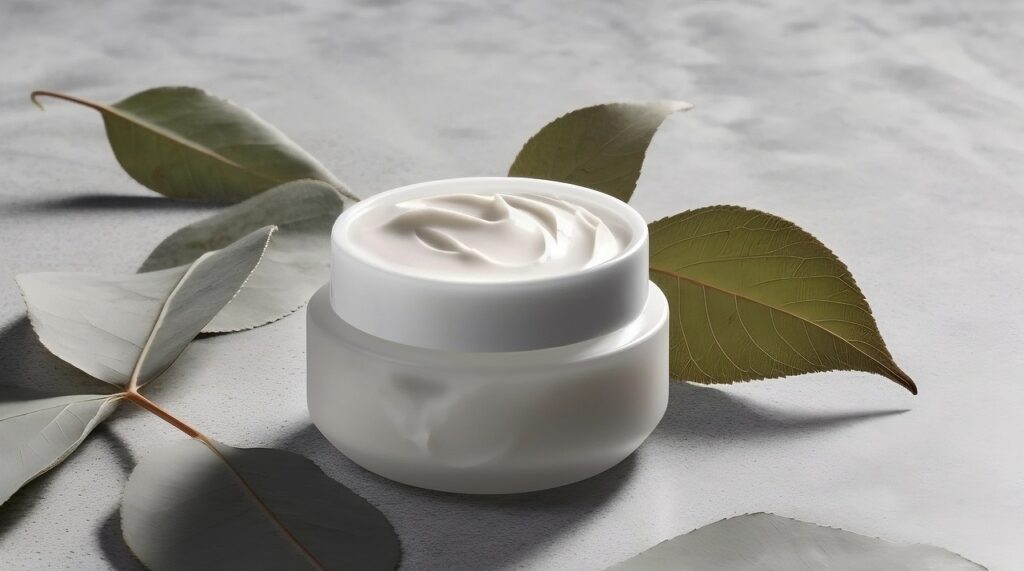What is Aminolevulinic Acid (ALA)?
Aminolevulinic Acid (ALA) is a photosensitizing agent used in Photodynamic Therapy (PDT) for the treatment of various skin conditions, including actinic keratosis, superficial basal cell carcinoma, and other skin lesions. ALA is available in a 20% solution or cream formulation.
Mechanism of Action
ALA is a precursor in the heme synthesis pathway. Upon application to the skin, ALA is absorbed by abnormal cells and metabolized to protoporphyrin IX (PpIX), which is a potent photosensitizer. When exposed to a specific wavelength of light (usually red light), PpIX gets activated, producing reactive oxygen species (ROS) that selectively destroy the target abnormal cells while sparing surrounding healthy tissue.
Use of Photodynamic Therapy (PDT) in Dermatology
Photodynamic Therapy (PDT) involves the application of a photosensitizing agent (like ALA) followed by exposure to specific wavelengths of light to treat various dermatological conditions. Its efficacy lies in its ability to selectively target abnormal cells while minimizing damage to surrounding healthy tissue.
Common Dermatological Conditions Treated with PDT:
-
Actinic Keratosis :
- Description : Precancerous lesions caused by sun exposure that may progress to squamous cell carcinoma if untreated.
- Use of PDT : PDT effectively reduces the number of actinic keratoses by inducing cell death and promoting the turnover of abnormal skin cells.
-
Basal Cell Carcinoma (Superficial Type) :
- Description : The most common form of skin cancer, basal cell carcinoma is typically localized and may appear as a pearly bump or red patch.
- Use of PDT : PDT offers a non-invasive treatment option for superficial basal cell carcinoma while preserving the surrounding healthy skin.
-
Squamous Cell Carcinoma (Superficial Type) :
- Description : Another common skin cancer that may present as scaly patches or open sores.
- Use of PDT : Superficial squamous cell carcinomas can be treated effectively with PDT, targeting cancerous cells specifically.
-
Acne Vulgaris :
- Description : A common skin condition characterized by pimples, cysts, or nodules.
- Use of PDT : PDT can help reduce acne lesions by decreasing the number of sebaceous glands and reducing inflammation.
-
Psoriasis :
- Description : A chronic autoimmune skin disorder that causes rapid skin cell turnover, leading to thick, red, scaly patches.
- Use of PDT : PDT can be a useful treatment adjunct in managing psoriatic lesions by promoting cell turnover and reducing inflammation.
-
Sebaceous Hyperplasia :
- Description : Enlarged sebaceous glands often appearing as small, painless bumps on the face.
- Use of PDT : Effective in reducing the appearance and size of sebaceous hyperplasia lesions.
-
Morphea (Localized Scleroderma) :
- **Description 7. Morphea (Localized Scleroderma) :
- Description : A condition characterized by localized patches of hardened skin due to excessive collagen deposition.
- Use of PDT : PDT may help in reducing the thickness and improving the appearance of the affected skin areas.
-
Warts :
- Description : Benign growths caused by human papillomavirus (HPV), which can spread and become unsightly or bothersome.
- Use of PDT : Effective in treating resistant warts by targeting the abnormal keratinocytes and HPV-infected cells.
Application Instructions
1. Preparation Before Application:
- Patient Consultation : Evaluate the patient’s medical history and the specific skin condition being treated. Discuss the PDT process and set expectations for results and side effects.
- Skin Cleaning : Prior to the procedure, cleanse the treatment area thoroughly with a mild cleanser to remove any debris, makeup, or oils. This ensures optimal absorption of ALA.
- Skin Assessment : Inspect the treatment area for any open wounds or infections. Do not proceed with PDT if the skin is compromised.
2. Application of ALA 20% Solution:
Preparation of ALA Solution :
-
- Put on gloves to maintain hygiene.
- In a clean, dry area, prepare the ALA 20% solution in a suitable applicator or syringe.
Application :
-
- Even Coverage : Using a sterile cotton applicator or syringe, apply a thin, even layer of ALA solution over the targeted area. Ensure that the layer is neither too thin (which may reduce efficacy) nor too thick (which can cause excessive irritation).
- Avoid Sensitive Areas : Take care to avoid mucous membranes, eyes, and skin areas with compromised integrity.
Incubation :
-
- Allow the ALA solution to incubate on the skin for 14-18 hours (as recommended by the healthcare provider) to maximize absorption into abnormal cells.
- Protective Measures : If the patient is sensitive to light, they should avoid direct sun exposure during this time.
Application of ALA 20% Cream:
Preparation of ALA Solution :
-
- Clean the treatment area thoroughly, removing any debris or skincare products.
Application : :
-
- Apply a uniform layer of ALA cream directly onto the lesion or treatment area using a glove or fingertip.
- Gently massage the cream into the skin for even absorption.
Incubation
-
- Allow the cream to sit on the skin for 1-4 hours (as directed by your healthcare provider) for skin lesions or actinic keratosis.
3. Activation of PDT:
- Light Preparation :
- After the incubation period, gather appropriate light equipment (such as LED or laser lights, typically in the 630-635 nm wavelength range).
- 4. Light Exposure :
- Position the light source approximately 5-10 cm away from the treatment area.
- Expose the treated area to the light for about 10-20 minutes as directed by the healthcare provider. The duration may vary based on the condition treated and the patient’s skin type.
4. Post-Procedure Care :
- After the light treatment, inform the patient about expected reactions, which may include redness, swelling, or a burning sensation. These responses are generally temporary.
- Apply a soothing moisturizer and a broad-spectrum sunscreen with a high SPF (50+) to protect the treated area from UV rays.
Storage Instructions
- Aminolevulinic Acid 20% Solution and Cream should be stored at room temperature (20-25 °C or 68-77 °F), away from heat and direct sunlight.
- Keep the product tightly closed in its original container to protect it from moisture and light.
- Do not freeze the product, and keep out of reach of children.
Frequently Asked Questions (FAQs)
-
How effective is ALA for treating skin lesions?
- ALA has shown significant efficacy in treating actinic keratosis and superficial basal cell carcinomas, with many studies indicating a high clearance rate.
-
Are there side effects associated with PDT using ALA?
- Common side effects can include redness, swelling, peeling, and sensitivity in the treated area. In rare cases, hyperpigmentation or scarring may occur.
-
Can I continue using my usual skincare products after treatment?
- After treatment, it’s usually recommended to avoid aggressive skincare products for several days to allow healing. Always consult your healthcare provider for personalized advice.
-
How often can I undergo PDT with ALA?
- Treatment schedules vary based on the skin condition and individual response. Many providers recommend a series of treatments spaced several weeks apart.
-
Is ALA safe for all skin types?
- ALA is generally safe for most skin types. However, sensitivity may vary. Always discuss your medical history and skin type with your healthcare provider before treatment.
References
- Wiegell, S. R., et al. (2009). “Photodynamic therapy of actinic keratosis: a review.” Dermatologic Surgery , 35(10), 1496-1508.
- de Araújo, R. M., et al. (2022). “Efficacy of aminolevulinic acid photodynamic therapy in dermatology: a systematic review.” Clinics , 77, e3555.
- Gollnick, H., et al. (2003). “Topical photodynamic therapy for skin cancer.” Journal of Cutaneous Medicine and Surgery , 7(2), 190-195.
- Kálmán, E., et al. (2016). “Aminolevulinic acid photodynamic therapy for superficial basal cell carcinoma: a systematic review and meta-analysis.” Lasers in Surgery and Medicine , 48(8), 706-715.

Lane Khin, the compounding pharmacist of My Skin Pharmacy, brings a wealth of knowledge from the worlds of pharmacy and dermatology to the table. With degrees in Pharmacy and Applied Science from QUT, Lane combines a deep understanding of compounding and skincare with a friendly, accessible approach. Through My Skin Magazine, Lane shares her expertise, offering readers practical advice and insights into personalised skincare solutions. Lane has a real passion for helping others achieve their best skin.


